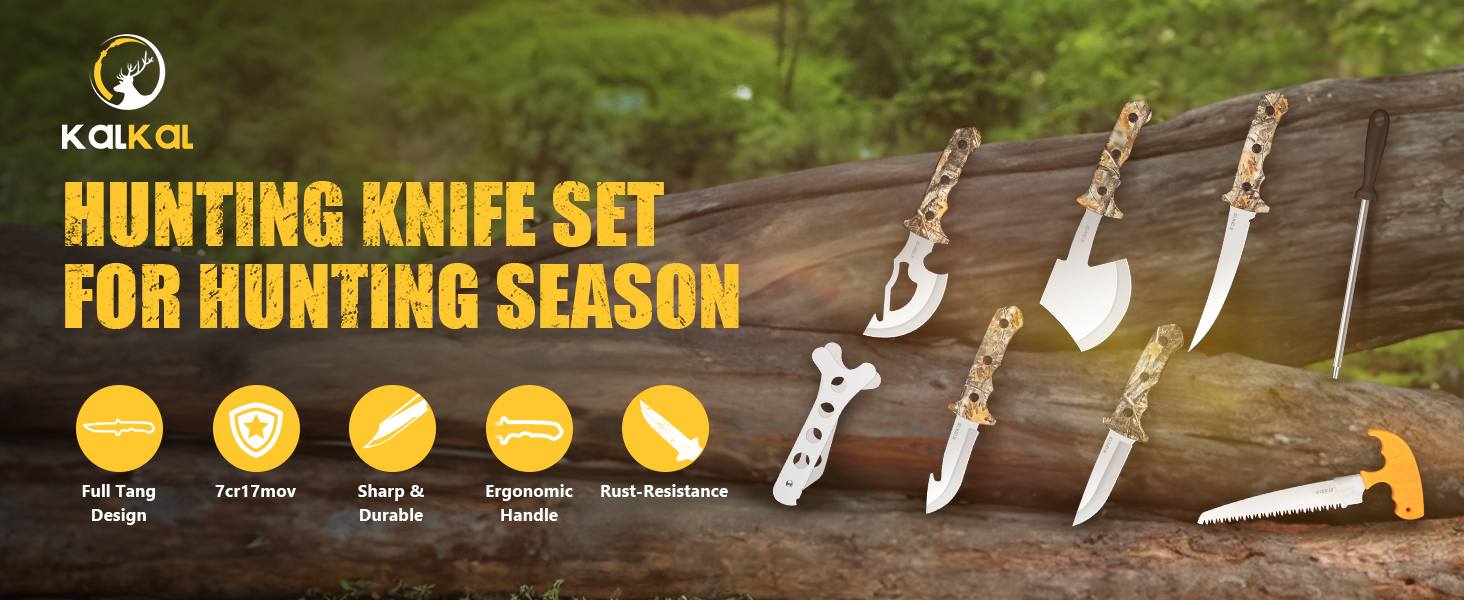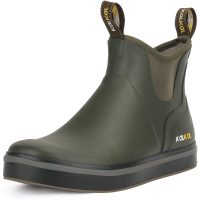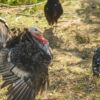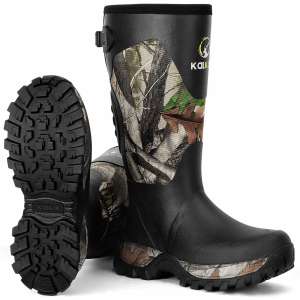The bobcats are shy, feral cats that are found in most parts of North America. Although they are routinely hunted to make pelts, there is sometimes an interesting question on hunting boards and survival forums: Can you eat a bobcat?
This question usually raises curiosity, skepticism, and many strong opinions. Bobcat meat may be worth trying out, especially to adventurous eaters or hunters who do not like to waste a harvest, but there are caveats.
In this ultimate guide, we will explore the safety, health risks, taste, ethical considerations, and how well the bobcat meat is prepared to be eaten.
Is Bobcat Meat Safe to Eat?
Bobcat meat is edible, but care is needed. Bobcat meat, as with all wild game, has some health concerns unless handled, checked, and cooked properly.
Bobcats are also predatory animals, so their meat may be a potential source of numerous pathogens and parasites, such as trichinella, toxoplasma gondii, and other zoonotic bacteria.
These pathogens are not exclusive to bobcats. They are present in most varieties of wild game. However, as apex predators, bobcats have a higher chance of being parasitized because of their location in the food chain. Some of the common pathogens that can contaminate bobcat meat are.
- Trichinella spiralis– A parasitic roundworm that causes trichinosis.
- Toxoplasma gondii– A protozoan parasite, particularly dangerous to pregnant women and those with compromised immune systems.
- Salmonella and coli can contaminate meat through improper handling.
Before consuming bobcat meat, it’s essential to:
- Have the meat tested for trichinosis, especially if you plan to undercook any part.
- Freeze the meat at -5°F (-20°C) for at least three weeks to kill some parasites (note: this may not be effective for all pathogens).
- Field dress with care, avoiding contamination from intestines and organs.
- Cook thoroughly, reaching an internal temperature of at least 165°F (74°C).
- Clean all tools and surfaces after handling the raw meat to avoid cross-contamination.
Health Risks of Eating Bobcat
Eating improperly prepared bobcat meat can potentially result in:
- Trichinosis – It is characterized by pain in the muscles, fever, and intestinal discomfort. Without treatment, it may occur in a severe form.
- Toxoplasmosis- These are flu like symptoms which may turn out to be hazardous to pregnant women or individuals with weakened immunity.
- Campylobacteriosis- A Bacterial infection that causes diarrhea, abdominal cramping, and fever.
- Salmonellosis – One may experience stomach cramps, vomiting, and diarrhea which is typically caused by poor storage of food or undercooked meat.
What Do Bobcats Eat and Why It Matters?
Bobcats are strict carnivores. Their diet typically includes:
- Rabbits and hares
- Birds and rodents
- Occasionally, deer fawns and reptiles
Bobcats have a higher chance of being carriers of transmissible diseases than herbivores because they feed on raw food, such as animals, some of which may also be infected with parasites. They also have lean muscle with minimal fat content since they are fed a high-protein, all-meat diet.
The bioaccumulation of toxins and parasites occurs more often in carnivorous animals. Therefore, it is essential to pay maximum attention to safety issues when cooking and consuming the meat of bobcats.
How to Reduce Risk When Eating Bobcat Meat?
- Use gloves when field dressing and butchering, so as not to come in contact with any blood or body fluids. Check more on How Can You Protect Yourself When Dressing Game?
- Remove liver, intestines, and kidneys, where parasites and heavy metals can be concentrated.
- Avoids contact between meat and fur or digestive organs.
- Cook thoroughly. Never consume bobcat meat rare or medium-rare.
- Inspect meat visually for signs of parasites (though not all are visible).
- Use separate utensils and boards for raw and cooked meat.
Should You Eat Bobcat?
What Hunters Say?
Forums such as Arizona Hunting Forums and Predator Masters offer anecdotal insights. Some hunters report that bobcat meat, while lean and gamy, is surprisingly palatable when properly prepared. Others mention that it’s an acquired taste—better suited for slow-cooked stews than quick grills.
Should People Eat Bobcat Meat?
The decision to eat bobcat meat boils down to:
- Personal preference– Not everyone is comfortable eating predators.
- Health risk tolerance– Some may find the pathogen risk too high.
- Cultural or ethical beliefs– In some cultures, eating carnivores is taboo.
- Conservation status– Bobcats are not endangered in most areas, but overhunting could become an issue locally.
- Predator Respect– Some argue that predators play a vital ecological role and should be preserved, not eaten.
- Waste Reduction– Conversely, using the meat rather than discarding it is seen by many as more respectful.
- Hunting Laws– Always ensure you are legally allowed to harvest bobcats in your area, as regulations vary by state and province.

If you’re looking for a hunting knife set, try the Kalkal’s. This 8-piece set will make field dressing easier.
Taste & Culinary Comparison
What Does Bobcat Taste Like?
Bobcat meat is often described as:
- Mildly gamy– Less than expected for a wild predator.
- Lean and slightly sweet– Similar to pork loin, but drier.
- Firm in texture– Not as tender as venison, closer to rabbit or lynx.
Many who try bobcat are surprised that it doesn’t have the overwhelming gamey flavor that some other predators possess. The flavor also changes based on the age, sex, and condition of the bobcat at the time of harvest.
Comparison to Other Wild Game
Bobcat meat tastes different from other wild game. Compared to venison, which is rich and strong, bobcat is leaner and has a milder flavor, and is good for people who find deer meat too heavy.
It also tastes better than coyote, which can be too gamey for some. Bobcat and lynx meat are very similar since they’re both wildcats — you might not even tell the difference.
Compared to animals like beavers or muskrats, bobcat has a cleaner taste and aren’t as oily. That makes it easier to cook with and match with other flavors. Overall, bobcat might not be as common, but it’s a solid option with a nice, mild taste.
- Venison– Bobcat is leaner, less earthy.
- Coyote– Bobcat is milder and more palatable.
- Lynx– Nearly identical in texture and flavor, as both are wildcats.
- Beaver or Muskrat– Bobcat is cleaner-tasting and less oily.
What Affects Taste?
The taste of bobcat meat depends on a few key things. First is their diet — bobcats that eat fresh prey like rabbits or rodents usually taste better than those that scavenge. What they eat affects how rich and clean the meat tastes.
Age matters too. Younger bobcats have more tender and flavorful meat, while older ones can be tougher. So, if you’re looking for better texture, younger is usually better.
Where they live also plays a role. Bobcats from clean forests tend to taste better than those from cities or swamps. Their environment affects both their health and what they eat.
Finally, the season you hunt them in can make a difference. Bobcats taken in winter often taste better and carry fewer parasites than those taken in summer. Cold weather also brings out a stronger flavor in the meat.
- Diet– Bobcats feeding on fresh prey tend to taste better.
- Age– Younger bobcats offer more tender meat.
- Habitat– Clean, forested environments produce better-tasting meat than urban or swampy ones.
- Time of Year– Winter kills may have better flavor and lower parasite loads than summer animals.
Is Bobcat Meat Nutritious?
Yes, bobcat meat is actually pretty nutritious. It’s high in protein, which helps with muscle growth and energy — perfect for anyone following a high-protein diet.
It’s also low in fat, so it’s a great choice if you’re trying to eat leaner or cut back on greasy meats like pork or beef.
On top of that, bobcat meat has lots of iron and B vitamins, which are important for keeping your energy up and making healthy blood cells. It even has less cholesterol than many store-bought meats, making it a smart option for heart health.
- High protein– Excellent for muscle repair and energy.
- Low fat– Makes it suitable for lean diets.
- Rich in iron and B-vitamins– Beneficial for energy metabolism and red blood cell production.
- Low cholesterol– Compared to beef or pork.
However, because of the risks associated with eating carnivorous animals, they should be consumed occasionally rather than as a dietary staple.
Preparation & Cooking Methods
Field Dressing and Skinning Tips
- Use gloves and sharp knives to avoid puncturing internal organs.
- Hang the bobcat by its hind legs for clean skinning.
- Make incisions along the legs and underbelly, peeling the hide slowly.
- Avoid contaminating the meat with fur or digestive fluids.
- Keep meat cool during transport to prevent bacterial growth.
Parts to Keep
When processing a bobcat, certain cuts of meat are considered good to keep due to their taste and texture. The hindquarters are among the best parts to harvest. With proper preparation, hindquarter meat can be tender and flavorful, especially when marinated or cooked low and slow.
Another prized cut is the tenderloin, which is located along the inside of the backbone. This is one of the most tender parts of the animal, offering a delicate texture and mild flavor.
The backstrap is also a favorite among hunters. It’s a long, lean strip of meat that’s easy to clean and versatile to cook — whether sliced into medallions, grilled, or used in stir-fries or stews.
Lastly, shoulder roasts are worth saving. With time and moisture, the meat breaks down and becomes tender, making it ideal for soups, stews, or pulled meat recipes.
Parts Should Be Discarded
While bobcat meat can be safe and enjoyable when properly prepared, there are several parts that are best discarded due to safety concerns or poor taste.
The intestines should always be removed and discarded immediately. Like with most wild game, these organs can harbor harmful bacteria and should not be consumed under any circumstances.
The liver and kidneys may seem like usable organs in some animals, but in bobcats, they carry a higher risk of parasites and toxins. Due to the bobcat’s carnivorous diet and potential exposure to harmful pathogens, it’s safer to discard these organs rather than take the risk.
It’s also wise to remove and discard any excess fat or fatty tissue. Wildcat fat can have an unpleasant, gamey flavor and tends to store environmental toxins. Unlike the fat from deer or other herbivores, bobcat fat doesn’t add much culinary value and can even ruin the taste of your dish.
Being selective about which cuts to keep and which to toss helps ensure a better eating experience — one that’s not only safer but also more flavorful and enjoyable.
Cooking Bobcat Meat
Marinade Techniques
Bobcat meat is very lean and slightly gamy. So, marination will be a benefit before cooking. It tenderizes the dense muscle fibers and mellows out any wild, musky flavors common to predator meats.
To reduce gaminess and improve tenderness, consider:
- Sour marinades –Tough proteins can be softened and unacceptable flavors neutralized using vinegar, lemon juice, or wine. An ideal soak is 6-12 hours.
- Salt brines –A brine wash of the meat in saltwater solution (1/4 cup kosher salt to 1 quart of water) may retain moisture during cooking and help even out the flavor.
- Buttermilk soaks –It is an old Southern preparation technique that softens and adds a slight richness that balances game meat.
- Aromatics and spices –Rosemary, garlic, thyme, bay leaves, black pepper, or crushed juniper berries will enhance the marinade and add to the natural meat flavor.
🔔Pro Tip: Marinate in a fridge but not at room temperature, to avoid stimulating bacteria. Never save used marinades and use them as a sauce unless thoroughly boiled.
Traditional Cooking Methods
Because it is lean, the bobcat meat lends itself to moist heat or methods that avoid desiccating. The best cooking techniques include methods that trap moisture or those that degrade connective tissue slowly.
- Stews and slow-cooking–Tougher cuts that are most suitable for stew and slow-cooking include shoulders and thighs. Cook over low heat with onion, carrots, celery, and broth for many hours, until fork-tender.
- Smoking– Gives a wonderful smoky flavor, particularly when hardwood is smoked (such as hickory or applewood). Nevertheless, make sure that the internal temperature is at least 165°F (74°C) to be safe against diseases.
- Roasting– It can be used with high-quality cuts such as the backstrap or tenderloin. To avoid drying, wrap in bacon or enclose with pork fat, and roast at a low heat, so that juices are not evaporated.
- Grilling or pan-searing– Only the most tender cuts should be grilled or pan-seared. Ideally recommended after the meat has been marinated overnight. High heat should be fast and precise enough to avoid making the meat rubbery.
🔔Bonus Idea: Try making pulled bobcat in a barbecue-style sauce after slow-cooking—it shreds well when properly tenderized and pairs nicely with bold seasonings.
Temperature and Doneness Guidelines
Cooking wild carnivores such as bobcats requires food safety. Internal temperatures should be strictly observed to kill the pathogens.
- Always cook to an internal temperature of 165°F (74°C). This is the lowest safe temperature to kill trichinella and other possible parasites in wild game.
- Use a reliable meat thermometer inserted into the thickest part of the meat, away from bone or fat.
- A 5-10 minute rest period should be given to the meat after the cooking process. This aids in the redistribution of juices, and enhances texture.
- Avoid undercooking, especially for mixed dishes like bobcat chili or sausage, where ground or minced meat may contain hidden bacteria throughout.
🔔Important: Avoid rare or medium-rare preparations under any circumstances. Unlike beef or lamb, wild cat meat must be fully cooked to ensure safety.
Conclusion
Bobcat meat is edible, and it can even be quite tasty when prepared properly. But it must be handled strictly with safety since there are parasites and pathogens to take into consideration. Although it is a source of lean protein and healthy nutrition, the chances of undercooking are high.
Bobcat meat is best served in a stew or as slow-cooked meat and is perfect for anyone willing to use every bit of the harvest. To safely enjoy this exotic wild game, always hunt it legally, handle it properly, and cook it completely.




















Leave a reply